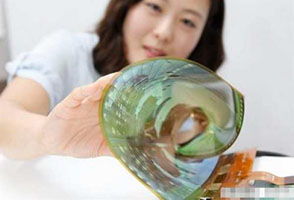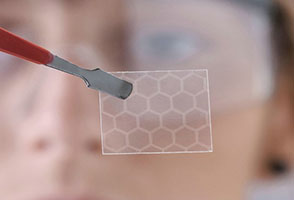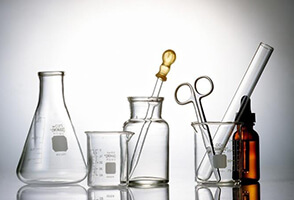Introduction: The Key Role of NMP in the Lithium Battery Industry
N-Methyl-pyrrolidone (NMP, CAS: 872-50-4) is a polar aprotic solvent widely used in the preparation of cathode slurries for lithium-ion batteries (LIBs). Due to its excellent solubility, low volatility, and high boiling point, NMP efficiently dissolves polyvinylidene fluoride (PVDF), ensuring uniform coating of active materials on current collectors and enhancing battery performance. However, as the lithium battery industry rapidly advances, optimizing NMP usage, increasing recovery rates, reducing costs, and minimizing environmental impact have become major research focuses.
1. The Role of NMP in Lithium-Ion Batteries
During lithium battery manufacturing, NMP is mainly used in the preparation of cathode slurries to ensure uniform dispersion of active materials, conductive agents, and binders, forming a stable electrode structure. Its key roles include:
Dissolving PVDF binder: NMP effectively dissolves PVDF, allowing it to evenly coat cathode materials, improving coating adhesion and mechanical strength of the electrode.
Optimizing electrode structure: Controlling the proportion of NMP and coating process parameters improves the electrode's porosity and ion transport properties, enhancing energy density and cycle life.
Enhancing electrochemical performance: NMP influences the microstructure of electrodes during coating and drying, and its proper use optimizes electrode interfaces and improves lithium-ion migration rates.
2. How to Optimize NMP Usage in Lithium-Ion Batteries?
As the lithium battery industry moves toward high energy density, long lifespan, and environmentally friendly production, optimizing NMP usage has become key to improving manufacturing efficiency and reducing costs.
2.1 Precisely Controlling NMP Concentration for Uniform Coating
Different types of lithium batteries require varying NMP concentrations. Optimizing NMP ratios in slurries significantly improves electrode coating uniformity. For example:
High-nickel ternary materials (NCM811, NCA) require low-viscosity slurries to ensure uniform coating and enhance rate performance.
Lithium iron phosphate (LFP) batteries require higher solid content to reduce solvent evaporation losses and improve production efficiency.
Optimization Methods:
Utilize intelligent ratio control systems to precisely regulate NMP content and minimize excessive solvent usage.
Optimize stirring speed and time to ensure uniform NMP distribution and enhance slurry stability.
2.2 Increasing NMP Recovery Rate to Reduce Production Costs
Since NMP is expensive, recycling is crucial to reducing lithium battery production costs. Traditional recovery methods consume high energy, while new technologies are optimizing the process.
Distillation recovery method: Utilizing NMP's high boiling point, the solvent is recovered through evaporation and condensation, achieving over 90% recovery rates.
Membrane separation technology: Nanofiltration or ultrafiltration membranes remove impurities, improving NMP purity while reducing secondary pollution.
Low-temperature vacuum recovery: Recovering NMP under low temperatures prevents thermal decomposition, enhancing solvent reusability.
Case Study: A major lithium battery manufacturer introduced an advanced membrane separation + distillation technology, increasing NMP recovery rates to 95%, effectively cutting production costs and reducing volatile organic compound (VOC) emissions.
2.3 Researching Green Alternatives to NMP
Due to potential environmental and health concerns, research is exploring more environmentally friendly solvent alternatives, such as:
γ-Butyrolactone (GBL): Similar solubility to NMP but lower toxicity, suitable for dissolving PVDF binders.
Ionic liquids (ILs): Low volatility and high solubility, applicable for cathode slurry preparation but costly.
Bio-based solvents: Researchers are developing biodegradable bio-based alternatives to NMP to reduce environmental pollution.
Currently, NMP remains the mainstream industrial solvent, but in the future, it may be gradually replaced by safer, greener options.
3. Future Trends in Optimized NMP Application
With rapid advancements in lithium battery technology, NMP optimization will move towards high efficiency, environmental sustainability, and intelligent automation, with major trends including:
✅ Intelligent Ratio Control & Automated Production
AI-driven optimization of NMP concentration improves coating uniformity and slurry stability.
Real-time monitoring with smart sensors ensures precise NMP usage and ratio adjustments.
✅ Efficient Recovery & Circular Utilization
Low-energy, high-efficiency NMP recycling technologies will gradually replace traditional methods for greener production.
Policy incentives will encourage battery manufacturers to establish closed-loop recycling systems, reducing solvent losses.
✅ Breakthroughs in Eco-Friendly Solvents
The development of green alternative solvents will be a research focus, with some NMP applications expected to be replaced within 5-10 years.
Regulatory measures and technological progress will drive lithium battery manufacturing toward low-pollution, low-emission solutions.
Conclusion: NMP Optimization Supports Sustainable Lithium Battery Industry Development
As an indispensable solvent in lithium-ion battery manufacturing, optimizing NMP usage is crucial for enhancing battery performance, reducing costs, and minimizing environmental impact. By precisely controlling NMP concentration, improving recovery rates, and developing green alternatives, the industry can maintain high-efficiency production while achieving sustainable growth.
If your company is looking for high-purity NMP or optimized recovery solutions, contact UIVChem (Yurui Chemical). We specialize in providing chemical solutions for the lithium battery industry, helping enterprises achieve green and efficient production!





